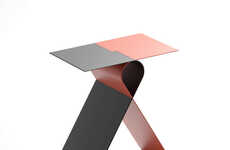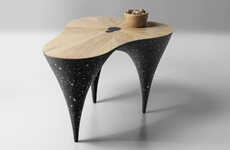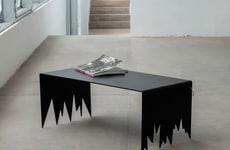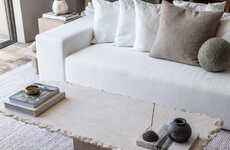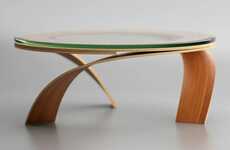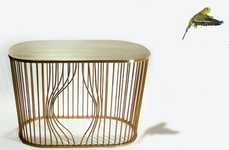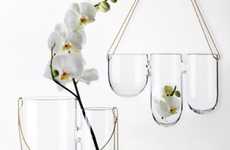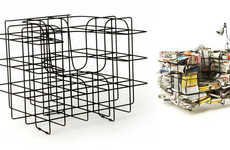
Constantine by Silva Bradshaw Performs a Balancing Act
Amelia Roblin — August 10, 2011 — Art & Design
References: industrialdesignserved
Four legs equally distributed beneath a quadrilateral surface is not the only recipe for a coffee table. Constantine by Silva Bradshaw demonstrates a perfectly capable form that serves its function superbly while offering a little visual intrigue.
The physics of this piece of furniture rely on an angled and elongated semicircular support, attached to the tabletop in an enchanting asymmetry. The weight of the entire piece is offset and stabilized in the interplay of the heavy diagonal and horizontal elements.
Its whitewashed Cristalplant materiality suggests a stark minimalism while the overall shape hints at the opposite. Constantine by Silva Bradshaw has been designed so that the combination of flat and curved surfaces cause the creation of exquisite shadows, bringing dynamism to drab living spaces.
The physics of this piece of furniture rely on an angled and elongated semicircular support, attached to the tabletop in an enchanting asymmetry. The weight of the entire piece is offset and stabilized in the interplay of the heavy diagonal and horizontal elements.
Its whitewashed Cristalplant materiality suggests a stark minimalism while the overall shape hints at the opposite. Constantine by Silva Bradshaw has been designed so that the combination of flat and curved surfaces cause the creation of exquisite shadows, bringing dynamism to drab living spaces.
Trend Themes
1. Asymmetric Table Design - Exploring asymmetrical table designs can bring visual intrigue and dynamism to furniture.
2. Minimalist Materiality - Utilizing stark materials like whitewashed Cristalplant can embody a minimalist aesthetic in furniture design.
3. Dynamic Shadow Creation - Incorporating flat and curved surfaces in furniture design can generate exquisite shadows, adding a sense of movement to living spaces.
Industry Implications
1. Furniture Design - Furniture designers can explore asymmetric table designs to create visually appealing and dynamic pieces.
2. Interior Design - Interior designers can incorporate minimalist materiality in furniture selection to achieve a minimalist aesthetic for living spaces.
3. Lighting Design - Lighting designers can leverage dynamic shadow creation in furniture designs to enhance the overall ambiance and mood of a room.
3.5
Score
Popularity
Activity
Freshness

